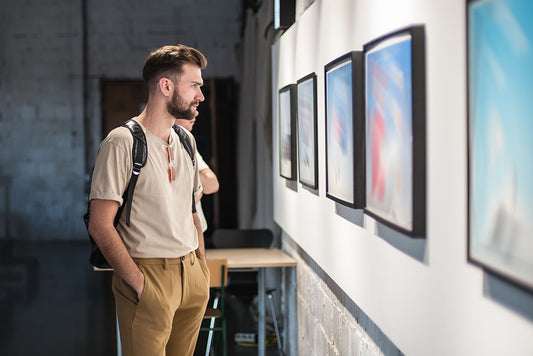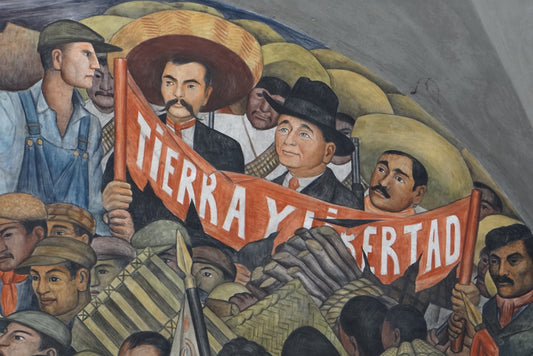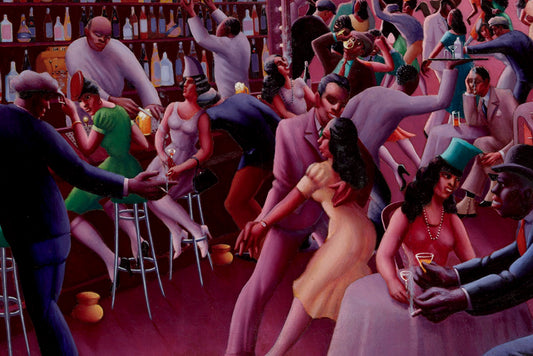
Painting the Path to Justice
Art has long been a powerful vehicle for social change, giving voice to the silenced, shedding light on inequality, and challenging societal norms. In the quest for civil rights, painters and visual artists from various movements have played a pivotal role in advocating for justice. This article explores the significance and impact of artists throughout history, highlighting both well-known and overlooked figures whose work speaks out against social injustice.
Realism: Jean-François Millet (1814–1875)
Amidst the rise of industrialization and social upheaval, French artist Jean-François Millet captured the plight of the working class in his paintings. Works like "The Gleaners" depicted rural laborers, shedding light on their struggles and emphasizing the importance of equitable treatment and fair wages.
Impressionism: Mary Cassatt (1844–1926)
Mary Cassatt, an American Impressionist, broke societal barriers by focusing on intimate scenes of women and motherhood. Her works challenged the prevailing notions of gender roles and celebrated the strength and individuality of women, making a significant contribution to the fight for women's rights.
Ashcan School: George Bellows (1882–1925)
George Bellows, a member of the Ashcan School, used his art to expose the realities of urban life in early 20th-century America. His paintings, like "Cliff Dwellers," shed light on the living conditions of the urban poor, advocating for social reform and a more equitable society.
Mexican Muralism: Diego Rivera (1886–1957)
Diego Rivera, a leading figure of the Mexican Muralism movement, used large-scale public art to promote social and political change. Rivera's murals, such as "Man at the Crossroads," addressed issues of labor rights, imperialism, and racial inequality, emphasizing the importance of unity and justice for all.
Harlem Renaissance: Jacob Lawrence (1917–2000)
Jacob Lawrence, a prominent artist during the Harlem Renaissance, depicted the struggles and triumphs of African Americans through his paintings. His series "The Migration Series" vividly portrayed the Great Migration and the socio-economic challenges faced by Black communities, amplifying their voices and calling for racial justice.
Social Realism: Dorothea Lange (1895–1965)
Dorothea Lange, a renowned documentary photographer, captured the essence of the Great Depression and the plight of migrant workers. Her iconic photograph, "Migrant Mother," became a symbol of resilience amidst adversity, shedding light on the hardships faced by marginalized communities and advocating for social reform.
Abstract Expressionism: Mark Rothko (1903–1970)
Mark Rothko, an abstract expressionist, used color and form to evoke emotional and spiritual responses. His large-scale color field paintings aimed to transcend the boundaries of race, religion, and nationality, urging viewers to embrace unity, empathy, and equality.
Feminist Art: Judy Chicago (1939–present)
Judy Chicago, a pioneering feminist artist, has challenged patriarchal norms and reclaimed women's narratives in art. Her most notable work, "The Dinner Party," celebrates the achievements of women throughout history and serves as a powerful symbol of feminist empowerment and inclusivity.
Street Art: Banksy (1974–present)
Banksy, an anonymous street artist, uses his work to critique social and political injustices. His thought-provoking and often controversial pieces, such as "Girl with a Balloon" and "Love is in the Bin," challenge systemic oppression, shining a light on issues ranging from war and capitalism to racism and environmental degradation.
Contemporary Art: Ai Weiwei (1957–present)
Ai Weiwei, a Chinese contemporary artist and activist, has used his art to confront authoritarianism and advocate for human rights. His installations and sculptures, like "Sunflower Seeds" and "Remembering," question political systems and highlight the power of collective action against social injustice.
These artists, both celebrated and overlooked, have utilized their creative platforms to speak out against social injustice of all kinds. Their work embodies the importance of diversity, equity, and inclusivity, challenging the status quo and inspiring change. By recognizing and celebrating their contributions, we honor their tireless efforts in amplifying marginalized voices and advocating for a more just and equitable society.
Art has the power to transcend boundaries, spark conversations, and ignite social progress. The legacy of these artists reminds us that even the stroke of a brush or the click of a camera can be a call to action. As we continue the fight for civil rights, their voices from the past resonate with the urgency of the present, urging us to use our own artistic expressions as catalysts for change. Together, let us paint a future where justice, equality, and empathy prevail.







